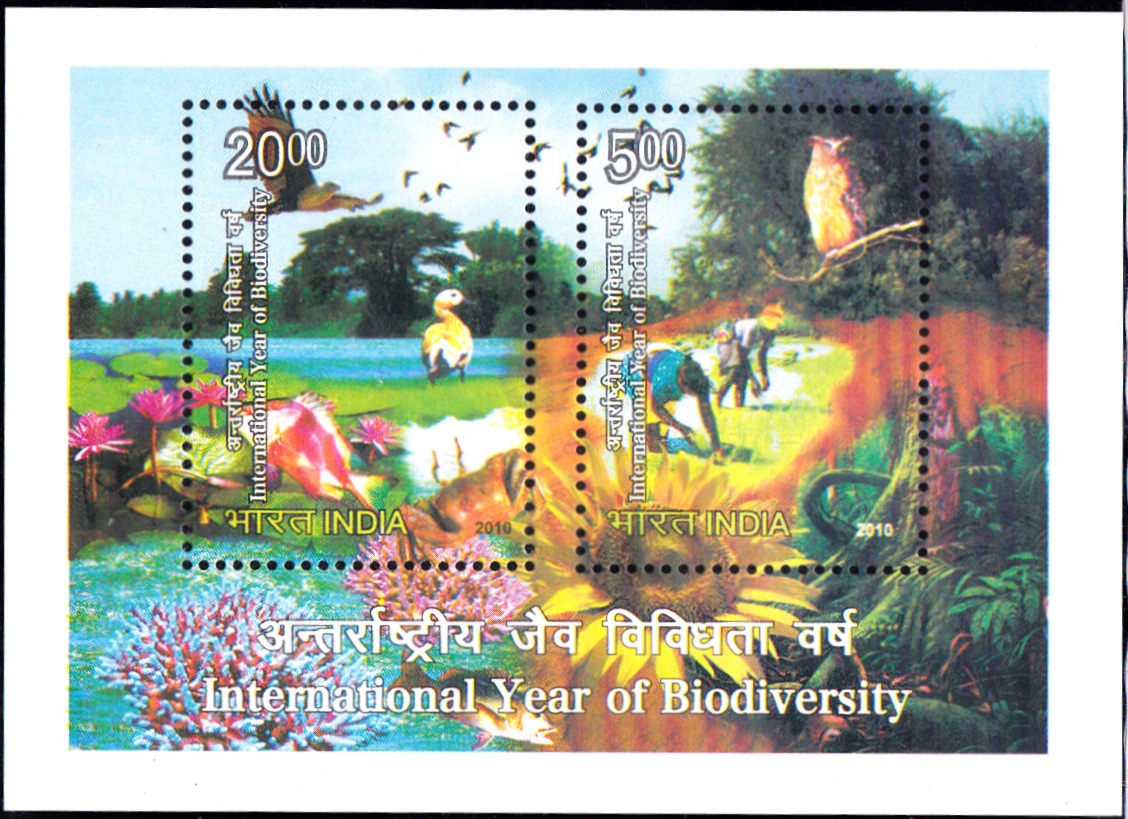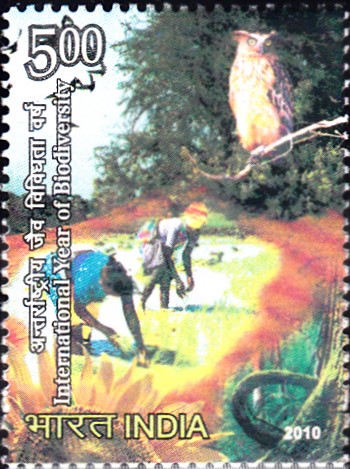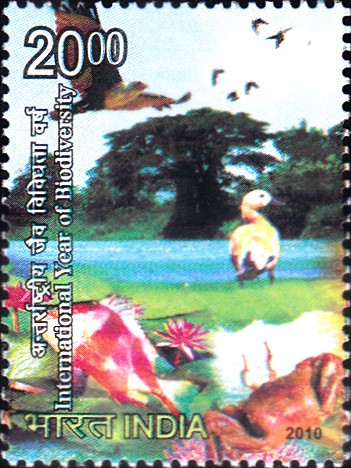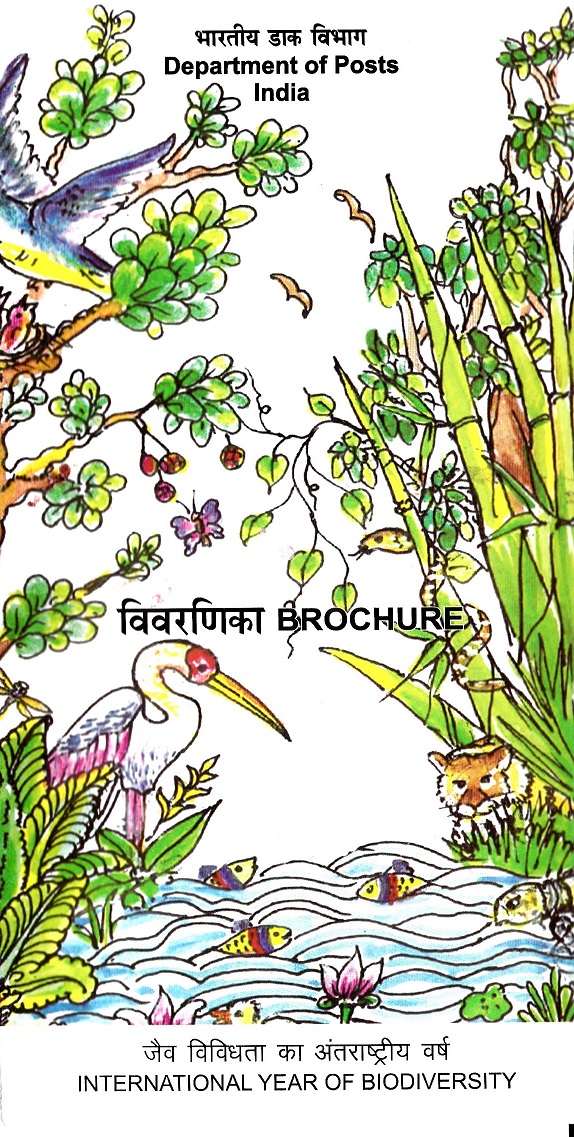
India on International Year of Biodiversity 2010
A Miniature Sheet consisting of 2 nos of commemorative postage stamps on Biodiversity on the World Environment Day :



 Issued by India
Issued by India
Issued on Jun 5, 2010
Issued for : To enhance public awareness of the importance of conserving biodiversity, India Post issues a set of commemorative postage stamp on Biodiversity on World Environment Day.
Credits :
Stamp & FDC : Suresh Kumar
Cancellation : Alka Sharma
Type : Miniature Sheet, Mint condition
Colour : Multi colour
Denomination : 2000 & 500 Paise
Stamps Printed : 0.8 Million each
Miniature Sheets : 0.4 Million
Printing Process : Wet–offset
Printer : Security Printing Press, Hyderabad
About :
- Biodiversity refers to the myriad life forms within a given ecosystem, biome or for the entire earth, in other words all varieties of life on earth.
- Biodiversity maintains the ecological balance and continues the evolutionary processes. The very survival of humankind depends on these core ecological functions. The indirect ecosystem processes provided through biodiversity include : photosynthesis, pollination, transpiration, maintaining the balance of atmospheric gases, maintaining hydrological cycles, chemical cycling, nutrient cycling, soil creation and maintenance, climate regulation, waste management, pest control, etc. Biodiversity also has aesthetic and
recreational values. - India is a megadiverse country, rich in biodiversity. With just 2.4% of the world’s land area, India holds about 7-8% of the global biodiversity. The wide diversity in physical features and climatic situations have resulted in a variety of ecosystems such as forests, grasslands, wetlands, coastal and marine and deserts. Forests ecosystems in particular exhibit tremendous variability ranging from temperate alpine to tropical wet evergreen forests. There are 16 major forest types in India. India is also one of the eight primary centres of the origin of cultivated plants and is rich in agricultural biodiversity.
- This rich diversity is being lost at a greatly accelerated rate largely because of human activities. Ecosystems are being fragmented and degraded and several species are in decline, posing a threat to biodiversity. The loss in biodiversity impoverishes us all, and weakens the ability of the living systems on which we depend to resist growing threats, such as climate change. The loss of biodiversity is inextricably linked to and exacerbates many of the key challenges the world faces in the 21st century, from provisioning of freshwater and sustainable agricultural production, to climate change, regional conflicts and migration due to shortage of resources. Maintaining biodiversity is critical for ensuring sustainable development and human welfare.
- 2010 has been proclaimed as the International Year of Biodiversity (IYB) by the United nations General Assembly and India joins the world in this salutary task of celebrating biodiversity and generating awareness of it.
- Text : Courtesy Ministry of Environment & Forests and National Biodiversity Authority.
Subscribe
Login
0 Comments







